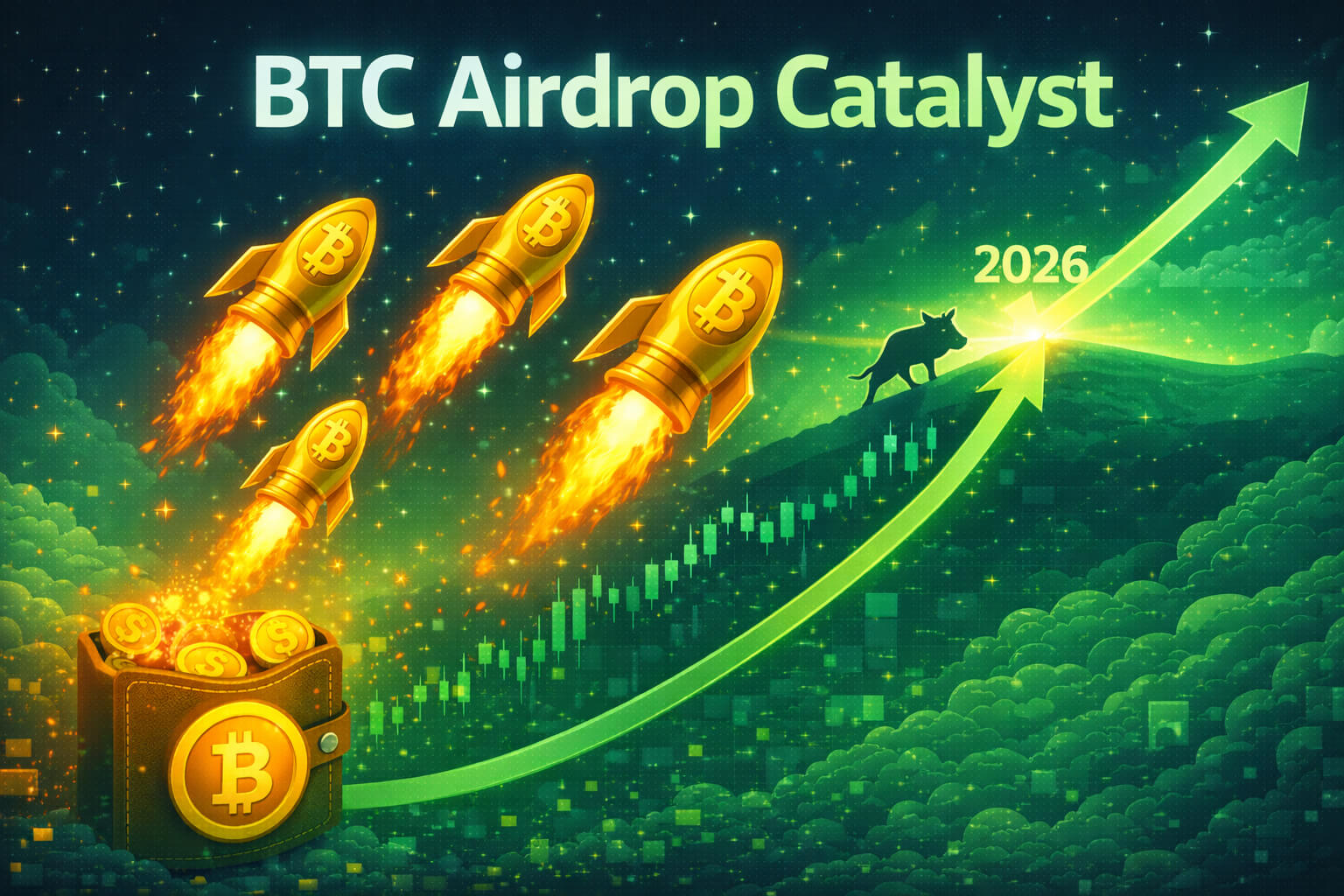As blockchain technology evolves, Decentralized Autonomous Organizations (DAOs) are reshaping governance, management, and decision-making within the crypto ecosystem. At the same time, airdrops continue to be a powerful tool for distributing tokens, attracting users, and rewarding contributors within decentralized communities. When combined, DAOs and airdrop distribution create a synergy that fosters community engagement, incentivizes participation, and empowers members.
This article delves into the intersection of DAOs and airdrop distribution, exploring how decentralized organizations are leveraging airdrops to reward contributions, encourage participation, and enhance governance within their communities.
1. Understanding DAOs and Their Role in Blockchain Governance
A DAO (Decentralized Autonomous Organization) is a community-led entity governed by smart contracts, with decisions made collectively by its members. Unlike traditional organizations, DAOs have no central authority. Instead, members make decisions collectively, often using governance tokens that represent voting power. This decentralized model emphasizes transparency, community control, and democratized decision-making, allowing DAOs to pursue various goals such as managing DeFi platforms, governing NFT projects, or even supporting social causes.
The rise of DAOs signals a shift in organizational structures, empowering communities to have a say in decisions, fund allocations, and strategic directions.
2. Why DAOs Use Airdrop Distributions
For DAOs, airdrops serve as an essential tool to align incentives with community members, reward active participants, and promote long-term engagement. Here’s a closer look at why DAOs increasingly rely on airdrop distributions:
a. Incentivizing Participation
Airdrops allow DAOs to reward members who actively contribute to governance, participate in the ecosystem, or support the project’s goals. By distributing tokens, DAOs make members feel more invested in the organization’s success, encouraging them to engage actively.
b. Rewarding Early Adopters
Early adopters often take a risk by supporting a DAO in its early stages. To recognize this commitment, DAOs frequently reward early supporters through airdrops. This approach fosters loyalty within the community and reinforces the idea of shared ownership among members.
c. Enhancing Governance Engagement
Governance tokens distributed via airdrops empower members by giving them a say in the DAO’s future. This approach not only ensures that voting power is widely distributed but also encourages members to actively participate in the organization’s governance. As a result, members feel more connected to the project’s success and growth.
d. Expanding the Ecosystem
Airdrops also serve as a way for DAOs to expand their ecosystem by distributing tokens to a wider audience. For instance, some DAOs airdrop tokens to users of related DeFi platforms or dApps. This strategy attracts new users and broadens the community’s reach, resulting in a more diverse and engaged user base.
3. How DAOs Manage and Distribute Airdrops
Managing and distributing airdrops in a decentralized manner presents unique challenges. Unlike centralized organizations, DAOs rely on community proposals, voting, and smart contracts to govern the airdrop process. Here are some common methods DAOs use to manage airdrop distributions:
a. Community Voting for Airdrop Approval
In many DAOs, the community decides whether to approve airdrop distributions. Members can submit proposals for airdrop campaigns, specifying the distribution method, target audience, and token amount. These proposals are then put to a vote, with token holders deciding the outcome.
This democratic approach aligns airdrop campaigns with the community’s interests, fostering a sense of ownership among members. For example, Uniswap DAO used community voting to approve a retrospective airdrop for early adopters who missed the initial distribution, showing its commitment to fairness.
b. Using Smart Contracts for Automated Airdrops
Smart contracts enable automated and transparent airdrop distributions within DAOs. By deploying a smart contract, DAOs can execute airdrop campaigns according to predefined rules without requiring manual intervention. This approach ensures fair token distribution, as smart contracts can be programmed to allocate tokens based on factors like membership status, participation levels, or governance contributions.
Automation not only reduces administrative costs but also enhances transparency, as the entire airdrop process is managed by code.
c. Snapshot-Based Airdrops
Many DAOs use snapshot-based airdrops to identify eligible recipients. In this model, the DAO takes a “snapshot” of token holders at a specific block height, distributing tokens to those who hold tokens or participate actively at that time. This method rewards consistent engagement, as only members who hold tokens during the snapshot period are eligible.
Snapshot-based airdrops allow DAOs to reward loyal members, as seen in DAOs like Aave and Curve, which use snapshots to reward long-term supporters.
d. Utilizing Layer 0 Protocols for Cross-Chain Airdrops
As DAOs expand across multiple blockchains, Layer 0 protocols like Polkadot and Cosmos facilitate cross-chain airdrops. These protocols enable DAOs to distribute tokens across different networks, ensuring that members on various chains are included in the airdrop campaign. Cross-chain airdrops promote inclusivity and broaden the DAO’s reach, making it accessible to a larger audience.
For DAOs with multi-chain ecosystems, cross-chain airdrops are especially beneficial, as they support distribution across networks like Ethereum, Binance Smart Chain, and more.
4. Case Studies: DAOs Effectively Using Airdrop Distributions
Several DAOs have successfully used airdrop campaigns to engage their communities, reward members, and fuel growth. Here are a few notable examples:
a. Uniswap DAO
Uniswap, one of the largest decentralized exchanges, set a precedent in the DAO world by airdropping UNI tokens to early users and liquidity providers. This initiative rewarded early adopters and increased governance participation. The Uniswap community also voted to expand the airdrop to additional users, showcasing how decentralized governance can manage token distribution effectively.
b. Aave DAO
Aave, a leading DeFi lending protocol, conducted multiple airdrops to reward active users and community members. By airdropping AAVE tokens to LEND token holders during a migration, Aave encouraged users to participate in governance and decision-making. These airdrops have boosted engagement and community involvement, strengthening Aave’s position in the DeFi space.
c. Curve DAO
Curve, a popular stablecoin exchange, introduced airdrop incentives for users who provided liquidity. By airdropping CRV tokens to early liquidity providers, Curve rewarded their contributions and encouraged them to continue supporting the platform. This strategy increased liquidity on Curve and strengthened its ecosystem by incentivizing long-term support.

5. Benefits and Challenges of Airdrop Distribution in DAOs
While airdrops provide numerous benefits to DAOs, they also come with challenges. Here’s a balanced look at both:
Benefits:
- Enhanced Community Engagement: Airdrops keep members engaged by rewarding contributions and incentivizing participation.
- Broader Voting Participation: Governance tokens distributed via airdrops ensure a wider voter base in decision-making processes.
- Fair Token Distribution: Airdrops help decentralize token ownership, preventing power concentration.
- Loyalty and Trust: Airdrops foster trust as members feel rewarded and valued within the community.
Challenges:
- Token Dumping Risks: Some recipients may sell tokens immediately, creating downward price pressure.
- Complexity of Cross-Chain Airdrops: Multi-chain airdrops are challenging to manage, requiring Layer 0 solutions.
- Administrative and Technical Costs: Implementing airdrops through smart contracts or Layer 0 protocols can be costly.
Conclusion
The intersection of DAOs and airdrop distribution is redefining how tokens are managed, distributed, and used within decentralized communities. Through governance voting, smart contracts, and cross-chain capabilities, DAOs are innovating in token distribution, empowering their communities, and driving engagement. Airdrops within DAOs are not just a means of rewarding members; they’re a tool for fostering loyalty, promoting active participation, and strengthening decentralized governance.
As DAOs evolve, they will likely experiment with new models that make airdrop distribution even more decentralized and inclusive. This synergy between DAOs and airdrops represents an exciting step toward a future where communities truly own and shape the projects they support.
For more insights on DAOs and decentralized finance, visit our DAO Guides.
Stay Updated
For the latest updates on DAO governance and airdrop strategies, follow us on:
Stay informed with the latest crypto insights at FreeCoins24.io.
Special Offer
Want to trade tokens earned through DAO airdrops? Sign up on Bybit today and enjoy up to $30,000 in deposit bonuses! Trade confidently on a top crypto platform.

















